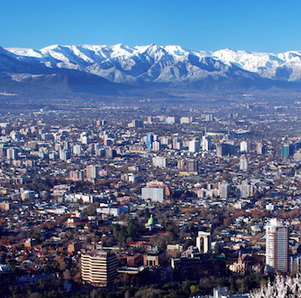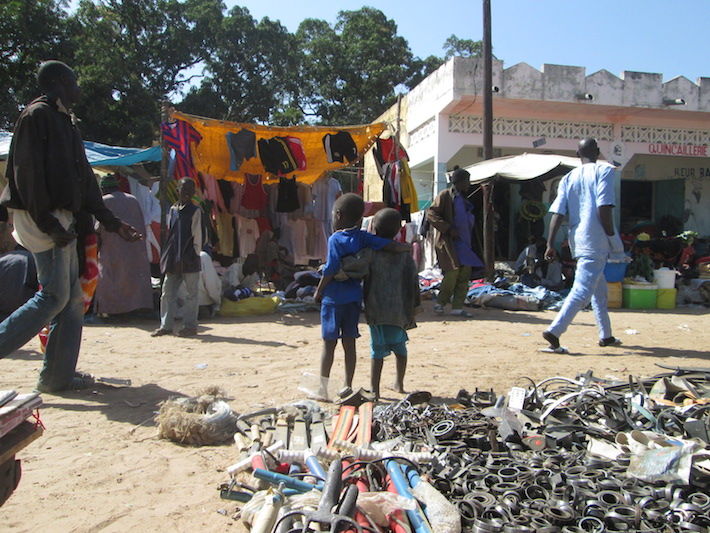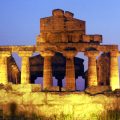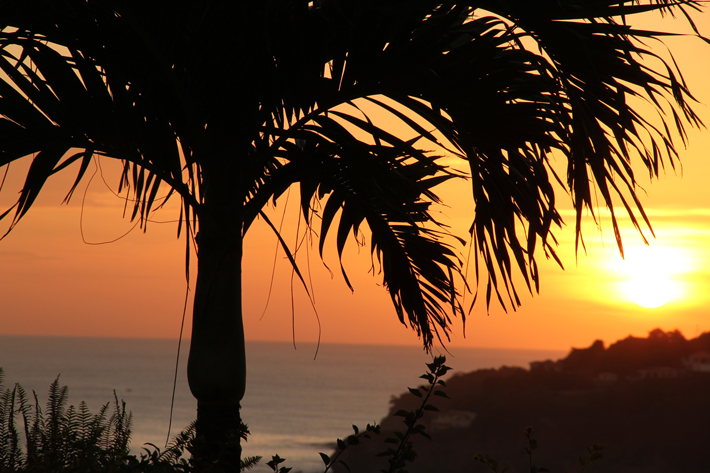Mini City Guide: Santiago, Chile
I love big cities, and always enjoy returning to Hong Kong, New York, and Sydney—among many others. But what about those unknown gems that are off the beaten tourist path… those obscure places that are just waiting to be explored by real travelers?
Our new “Mini City Guides” are here to uncover those gems, and we’re looking to our favorite explorers—AONC readers—to give us the inside scoop.
Tell us if there’s a city you’d like to nominate. This city was nominated by reader Jon Poritz.
—
Which accessibly obscure city would you like to share?
Santiago, Chile
What makes it unique?
Santiago is a city that has been experiencing its own recent renaissance, and it’s really exciting to see the changes propelling it into the 21st century. Chile has recently had the highest economic growth rate in Latin America, and it shows. The city also has burgeoning art and food movements, as well as an ambition to be the Silicon Valley of South America.

What makes it special to you?
Santiago is a city that is difficult to sum up, as it’s currently experiencing a transformation. Chile experienced dramatic hardship in its recent history, from some of the strongest earthquakes in the world to a brutal dictatorship, which only ended in 1990.
From these difficult experiences, Santiago has recovered and flourished in recent years due to the country’s economic success. This ambitious yet quirky city is quickly becoming a part of the international community, and Chileans are excited to show the world what they have to offer.

What’s the best place to grab a bite to eat or drink?
A popular neighborhood to try one of Santiago’s new and exciting restaurants is Bellavista, which is an artsy area in the center of the city with lots of colorful graffiti and boutiques. It’s recently become a more refined neighborhood, with new dining options popping up all the time.
Restaurants here range from fast food to fine dining, and are offering exciting re-invented Chilean and international cuisine. Take a walk through these bustling streets, and you’re sure to find something to please your appetite.

A short walk from Bellavista is another great neighborhood, Bellas Artes (the fine arts neighborhood). Between the boutiques and bookshops of this neighborhood, you can find a range of small casual restaurants and sidewalk cafés, a great place to relax after you visit Santiago’s famous art museum.
If you want to try Santiago’s best sandwiches, go to the Fuente Alemana in Plaza Italia. Here they offer the lomito, a thinly sliced pork sandwich with optional toppings, including fresh avocado, homemade mayonnaise, thick sliced tomatoes, and Chilean sauerkraut. It’s a classic sandwich, and they make the best in the city.
Where can you kick your feet up with a great cup of coffee?
The business district of downtown Santiago is famous for its Café con Piernas, or “coffee with legs,” which are cafés frequented by businessmen, and are serviced by scantily clad women. While these are popular in certain areas, the city has some great new cafés to get your caffeine fix.
One of the city’s best cafés is Blue Jar, located downtown near the presidential palace, La Moneda. This café has a full breakfast & lunch menu, outdoor seating, as well as a bar, making this a great place to relax any time of the day.
Another great new café that recently opened its doors in the Bellas Artes neighborhood is Colmado Coffee, serving different brew coffee (aeropress, chemex, siphon, pour over) and homemade breads and pastries, as well as live music performances.

Are there any festivities that can’t be missed?
If you want to see what Chilean culture is all about, a great time to visit is the beginning of the southern hemisphere spring in mid-September, when the country spends a week celebrating the fiestas patrias, or national holidays. The festivities are an expression of everything Chile, and involve rodeos, barbecues, traditional dances, and fondas, which are patriotically-decorated tents that pop up all over the city, under which the festivities take place.

If you come during this time, you can’t leave without trying the terremoto, or earthquake. This traditional drink is a combination of sweet (and strong) fermented wine with pineapple ice cream (usually served in a one-liter cup, hence the terremoto you feel afterwards). A popular spot to try this refreshing beverage is the infamous bar, La Piojera.
What’s the best time to visit?
It really depends on what you prefer to do here. Summer (November-February) is traditionally the best time to visit, as the weather is beautiful, and Santiago empties as the locals migrate towards the Pacific coast for their summer vacation.
If you want a Chilean cultural experience, mid-September is a great time, as the country takes a week off to celebrate their national holidays. There are plenty of festivities to make it a fun experience, with traditional rodeos, music, dancing and food.
If you want to enjoy excellent skiing in the local Andes Mountains, the winter (remember: July and August) is a great time to visit. There are some top ski resorts just outside of the city, including Portillo and Valle Nevado.

What’s the best way to get around town?
Santiago is currently home to one-third of Chile’s population and growing, so Santiago’s streets have become more congested in recent years. The public transportation system, while modern and large, still doesn’t service the airport, and is usually over capacity during busy hours.
The city is mostly flat, which makes the most efficient way to get around the city by bicycle, and the local government agrees. They recently announced a public bike sharing plan and an expanded bike path network to help ease road congestion and smog in the city. You can rent bikes by the hour in many neighborhoods for a very reasonable rate, a service that will soon be expanded to most of the city.

Any other areas in Santiago that can’t be missed?
Quinta Normal Park – a large park in the downtown area with art & history museums, including the new Memory & Human Rights Museum, which memorializes the Chilean dictatorship, as well as other global human rights issues.
San Cristobal hill – the main hill overlooking the center of the city, and is also a park with the best views of the city. You can walk, bike, or hail a taxi up the paved road leading to the top, or climb one of the dirt footpaths. If you want an easier walk, try walking up the Santa Lucia hill. Its smaller than San Cristobal, and has a historical fortress on top, as well as impressive views of the neighborhood.

Central Market – this is the central seafood market and has many restaurants to try some of Chile’s fresh fish and seafood. The wrought iron building was designed by French architect Gustav Eiffel.
La Moneda Palace – the office of the president and seat of government. There is a cultural center underneath the palace with rotating cultural exhibitions.
Costanera Center – the main tower of this complex is currently the tallest in Latin America. It’s an impressive view from the outside. Inside it contains the largest shopping mall in South America.
Any other areas around the city that can’t be missed?
Santiago is in a unique location, nestled between the Andes Mountains to the east, and the Pacific coast to the west, which makes it possible to go skiing and surfing in the same day!
Just outside the city lies the Maipo River Canyon, where you can do different outdoor activities, like hiking, horseback riding, and river kayaking, among others. Many Santiaguino’s visit on summer weekends to go camping and BBQ.

Within an hour drive from the city you will also find some of Chile’s world-class wine valleys (Casablanca & Maipo). Many of the vineyards offer tours, and some also have restaurants, where you can enjoy some of the new worlds top wine and have a great lunch to go along with it.
Also, about 1.5 hours drive from Santiago you’ll also find the port city of Valparaíso, often called the San Francisco of South America. This UNESCO World Heritage Site is known for its colorful art scene and historical economic importance to the region.
—
Thanks to Jon Poritz for sharing the story of his expat city experience! More Mini City Guides are on the way.
Images: 1, 2, 3, 4, 5, 6, 7, 8, 9, 10
###







